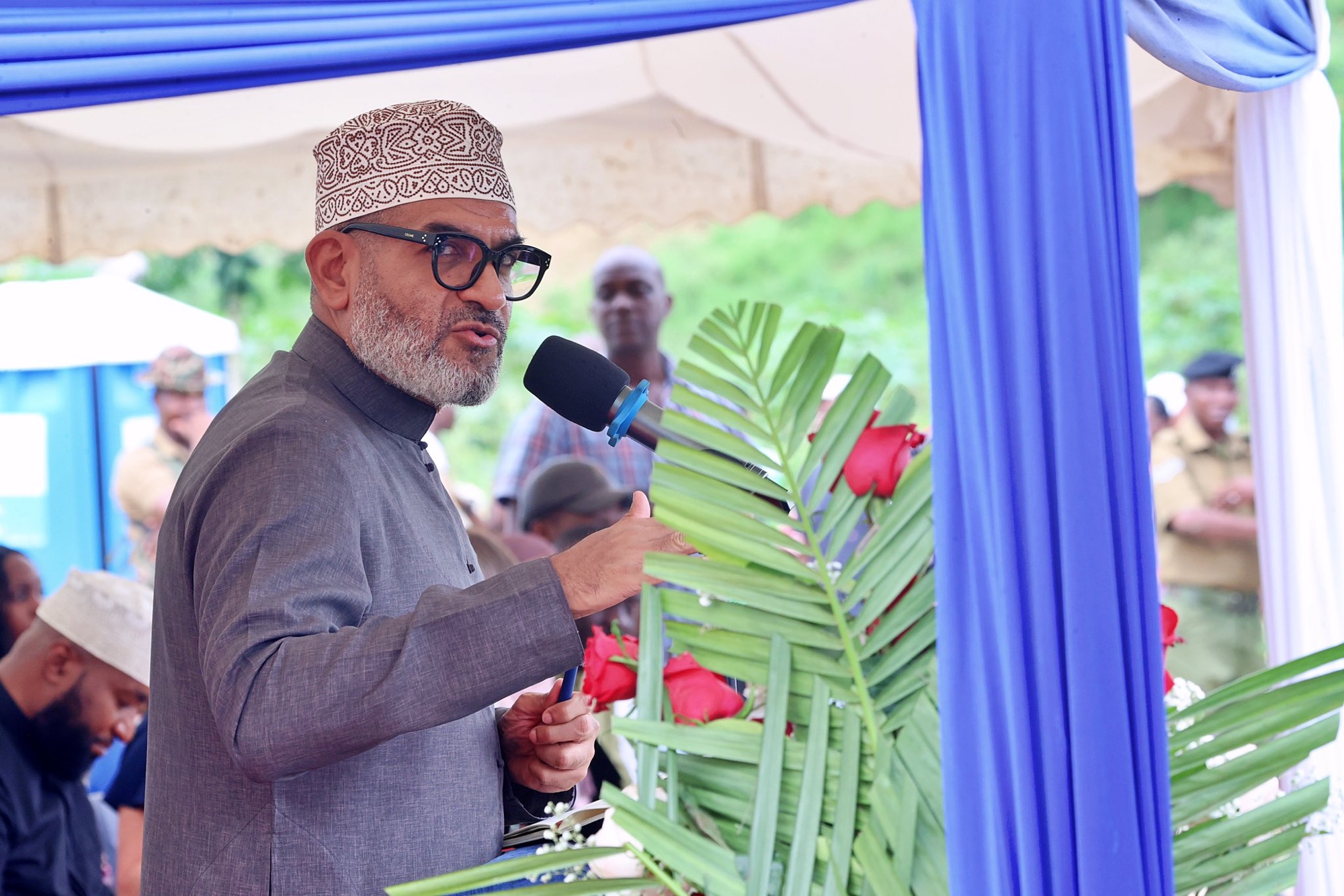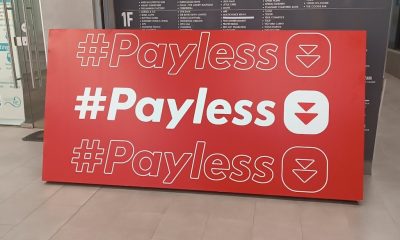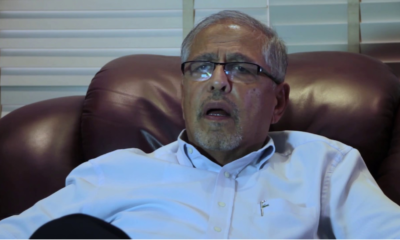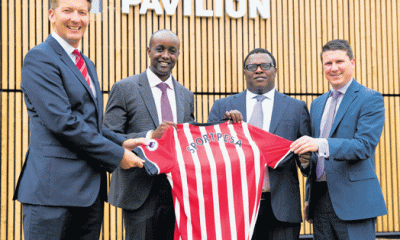Investigations
Report Exposes Rogue Contractors and Glaring Failures in Mombasa Building Collapse

Six Named Professionals Face Disciplinary Action as Multi-Agency Probe Uncovers Widespread Construction Malpractice
MOMBASA, May 31, 2025 – A damning investigative report into the collapse and subsequent demolition of an 11-storey building in Mombasa has exposed a shocking web of professional misconduct, regulatory failures, and systemic corruption that nearly led to a catastrophic disaster in Kenya’s coastal city.
The multi-agency taskforce report, released Friday by Mombasa Governor Abdulswamad Sherrif Nassir, has named six key individuals whose negligence and criminal malpractice contributed to the building’s structural failure at Plot No. XLVI/195/MI in Kilifi Corner, Mombasa Island, forcing Kenya Defence Forces to conduct a controlled demolition on April 9, 2025.
The building had partially collapsed on April 2, 2025, tragically leading to one fatality before the controlled demolition was undertaken to protect lives and property.
The Named Culprits
Governor Nassir publicly identified the following individuals as being directly responsible for the construction failures:
- Architect Kinuthia – County architect involved in conflict of interest
- Engineer Njiru – Licensed engineer implicated in credential renting
- Benedict Jaoko – Named as key participant in the malpractice
- Dennis Kimani Githinji – Identified among the culpable parties
- Danson Wachira – Listed as responsible for construction failures
- Wala Mason – Named in the investigative findings
Who Bears Responsibility
The taskforce identified multiple parties bearing direct responsibility for the disaster:
Primary Culprits:
- The developer – for initiating and financing a project without proper professional diligence
- The architect and structural engineer – for abdicating their professional duties and engaging in credential renting
- Individuals operating without valid licenses – for fraudulent practice
- Contractors lacking technical capacity – for accepting work beyond their competence
- A county officer – for enabling procedural shortcuts and bypassing critical regulations
The Six Named Individuals:
Governor Nassir specifically named:
- Architect Kinuthia – County architect involved in conflict of interest
- Engineer Njiru – Licensed engineer implicated in credential renting
- Benedict Jaoko – Named as key participant in the malpractice
- Dennis Kimani Githinji – Identified among the culpable parties
- Danson Wachira – Listed as responsible for construction failures
- Wala Mason – Named in the investigative findings
What Went Catastrophically Wrong
The taskforce uncovered multiple layers of systemic failure that created a perfect storm of construction negligence across the entire project lifecycle:
Technical and Professional Failures
The investigation revealed fundamental failures in basic construction standards:
- Fundamental design flaws in the building’s structural planning
- Complete absence of critical site investigations, including the lack of a crucial geotechnical report
- Weak professional supervision with unqualified individuals masquerading as licensed professionals
- Credential renting by licensed architects and engineers – a fraudulent practice where professionals sell their qualifications to unqualified individuals to access construction tenders
Regulatory System Breakdown
The probe revealed shocking gaps in government oversight:
- Insufficient inspection and oversight by both county officers and National Construction Authority (NCA) officials
- Inadequate professional authentication on the electronic Development Application Management System (e-DAMS)
- Conflict of interest situations where county staff reviewed projects from their own firms
- Lack of standard checklists, clear peer reviews, or structural cross-verification
- Dangerous disconnect between county records and NCA data
Systemic Institutional Problems
Perhaps most alarming, the investigation uncovered systemic challenges affecting 73% of approved developments in Mombasa:
- 73% of approved developments handled by only five architects and three structural engineers – raising serious questions about effective supervision
- Many professionals allowed unqualified proxies to operate under their licenses
- No enforced requirement for professional indemnity insurance
- Weak integration between the County system and external regulators
- All projects receiving uniform scrutiny regardless of risk level
The Human and Financial Cost
The building collapse had devastating consequences that extended far beyond structural damage. CCTV footage shows that a man, Yussuf Ali Abdi, was inside the building. Minutes after he entered, the building collapsed, according to Governor Nassir.
Abdi’s body was later recovered from the rubble and buried at Kikoani in Mombasa County, 11 days after he went missing while inspecting a house he wanted to book.
The financial impact has been estimated at approximately Sh350 million in uninsured loans, representing a massive loss for investors and the local economy.
The Dramatic Demolition
The incident brought the entire county to a standstill as authorities were forced to take unprecedented action. The controlled demolition required:
- Closure of the Nyali Bridge from 7 am, cutting the vital link between Mombasa Island and the mainland
- Temporary shutdown of schools and hospitals in the surrounding area
- Evacuation of residents and businesses from the danger zone
- Deployment of both Kenya Defence Forces and National Police Service officers
- A coordinated explosive demolition that could be heard from miles away
Governor’s Swift Action and Consequences
Governor Nassir has announced immediate and far-reaching consequences for those implicated:
Immediate Actions:
- Structural integrity tests ordered for all projects associated with the named individuals
- Project cancellations where the implicated parties are found incompetent
- Suspension of 20 high-rise buildings being constructed by the same contractor
- Suspension of county staff who failed in their oversight duties
Long-term Accountability:
- Report sharing with the Council of Governors to prevent similar incidents nationwide
- Names forwarded to relevant licensing authorities for disciplinary action
- Potential criminal charges being considered against the culpable parties
- License revocation proceedings initiated for professional misconduct
Comprehensive Reform Framework
The taskforce has proposed a three-tier reform strategy addressing immediate enforcement, systemic changes, and technological upgrades:
Tier A: Enforcement & Integrity
Immediate Actions:
- Mandate structural audits of all other projects by the implicated professionals
- Enforce conflict of interest disclosures within the County government
- Penalize cases of credential renting with criminal sanctions
- Require contractor verification and stronger on-site documentation
Tier B: System Reforms
Process Overhauls:
- Require peer reviews for all complex or high-risk construction projects
- Enforce pre-design studies (including mandatory geotechnical reports) before approvals
- Implement standardized checklists and verification procedures
- Enable anonymous whistleblowing and reporting mechanisms
Tier C: Capacity & Technology
Technology Integration:
- Integrate real-time authentication with professional bodies (EBK, BORAQS)
- Introduce risk-based vetting for building plans based on complexity
- Launch compliance monitoring dashboards for public access
- Strengthen e-DAMS professional authentication systems
Governor’s Commitment to Accountability
In releasing the report, Governor Nassir emphasized that this investigation represents a fundamental shift in approach to construction oversight:
“This report is not about blame – it is about responsibility. The safety of our people demands that we do things that may be difficult, disruptive, and even painful, but which are absolutely necessary. We are committed to instituting long-overdue reforms in how Mombasa grows. From strengthening our systems to demanding greater integrity and professionalism in the built environment, we are charting a new path – one that protects lives, restores confidence, and ensures that progress is built on a solid foundation.”
The Governor announced immediate implementation of the most urgent recommendations alongside the launch of public compliance monitoring dashboards for transparency.
National Implications
This case has exposed vulnerabilities that likely extend far beyond Mombasa’s borders. The practice of credential renting and regulatory capture appears to be a systemic issue undermining professional standards across Kenya’s rapidly expanding construction sector.
Governor Nassir’s decision to share the findings with the Council of Governors suggests that similar investigations may be launched in other counties, potentially uncovering a nationwide pattern of construction malpractice that puts thousands of Kenyans at risk.
Industry Reckoning
The construction industry now faces its biggest accountability moment in recent memory. The named professionals face:
- License revocation by professional bodies
- Criminal prosecution for fraud and negligence
- Civil liability for damages and loss of life
- Professional blacklisting preventing future work
These consequences should serve as a stern warning to other professionals who might consider similar malpractice.
The Path Forward
For Mombasa residents and the broader Kenyan public, this investigation represents both a sobering revelation of how deeply systemic failures have penetrated the construction industry and a commitment to ensuring such disasters are never repeated.
The multi-agency taskforce chaired by architect Laurence Gitau will investigate the construction and supervision of the unsafe building, ensuring that accountability extends beyond individual actors to the systems that enabled their misconduct.
The full implementation of the taskforce’s recommendations could mark a turning point in Kenya’s approach to construction oversight, professional accountability, and public safety.
As disciplinary proceedings begin and the investigation widens, the Mombasa building collapse may well be remembered as the catalyst that forced Kenya’s construction industry to clean house and prioritize public safety over profit.
The complete taskforce report is expected to be made available to the public as investigations continue into the broader implications of the findings.
Kenya Insights allows guest blogging, if you want to be published on Kenya’s most authoritative and accurate blog, have an expose, news TIPS, story angles, human interest stories, drop us an email on [email protected] or via Telegram
-

 Investigations2 weeks ago
Investigations2 weeks agoHow Land Grabbing Cartels Have Captured Ardhi House
-

 Business2 weeks ago
Business2 weeks agoPanic As Payless Africa Freezes With Billions of Customers Cash After Costly Jambopay Blunder
-

 News4 days ago
News4 days agoTemporary Reprieve As Mohamed Jaffer Wins Mombasa Land Compensation Despite Losing LPG Monopoly and Bitter Fallout With Johos
-

 Investigations1 week ago
Investigations1 week agoHow SportPesa Outfoxed Paul Ndung’u Of His Stakes With A Wrong Address Letter
-

 News2 weeks ago
News2 weeks agoSCANDAL: Cocoa Luxury Resort Manager Returns to Post After Alleged Sh28 Million Bribe Clears Sexual Harassment and Racism Claims
-

 Investigations4 days ago
Investigations4 days agoFrom Daily Bribes to Billions Frozen: The Jambopay Empire Crumbles as CEO Danson Muchemi’s Scandal-Plagued Past Catches Up
-

 Sports3 days ago
Sports3 days ago1Win Games 2025: Ultimate Overview of Popular Casino, Sports & Live Games
-

 Investigations1 week ago
Investigations1 week agoInside the Deadly CBD Chase That Left Two Suspects Down After Targeting Equity Bank Customer Amid Insider Leak Fears

















